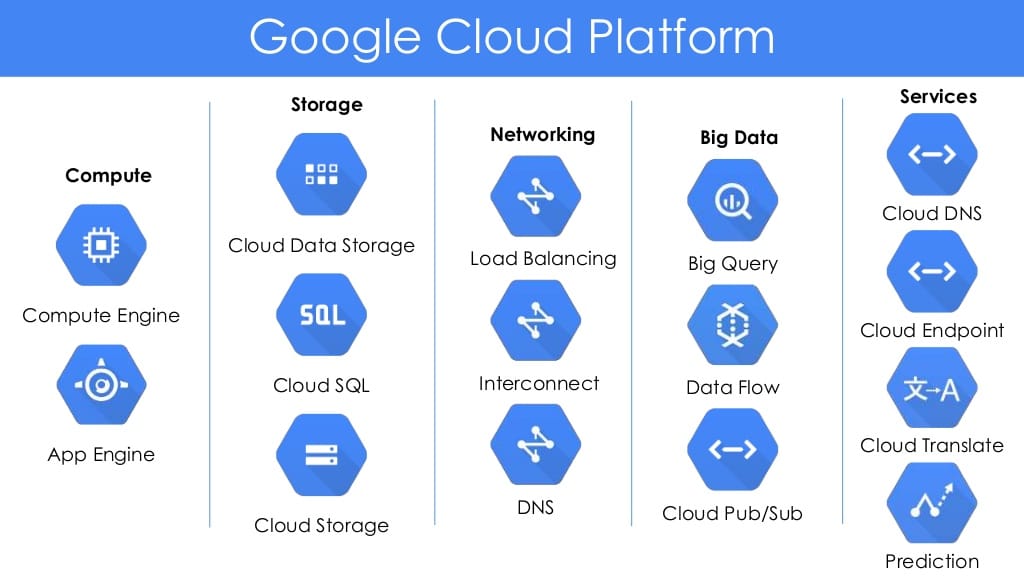Why Choose LinkDaddy Cloud Services: Benefits and Features Discussed
Wiki Article
Achieve Seamless Scalability With Cloud Services
In the ever-evolving landscape of cloud services, attaining smooth scalability stands as a cornerstone for modern-day companies seeking to remain competitive and versatile. The mission for seamless scalability with cloud solutions unveils a globe of possibilities for those ready to embrace the transformative power of vibrant source management.Benefits of Cloud Scalability
Cloud scalability supplies companies the adaptability to dynamically readjust sources based on need, ensuring optimum efficiency and price efficiency. One key advantage is the ability to range resources up or down quickly in action to rising and fall workloads. This agility makes it possible for businesses to fulfill transforming customer requirements without over-provisioning sources, ultimately causing set you back savings. Scalability likewise boosts efficiency by guaranteeing that systems can deal with enhanced website traffic or workload without experiencing downtime or stagnations. By successfully assigning resources, organizations can preserve high levels of performance during peak times without unneeded costs throughout quieter periods. Furthermore, cloud scalability promotes innovation and experimentation by enabling companies to easily test new concepts and range them as needed. This flexibility encourages a society of continual renovation and adjustment, allowing organizations to remain competitive in a quickly advancing market landscape. Eventually, the advantages of cloud scalability extend past price financial savings to encompass better efficiency, dexterity, and advancement.Trick Attributes for Scaling
Effective scaling in cloud services counts on key features that allow organizations to readjust resources dynamically based upon demand. One important feature for scaling is flexibility, allowing sources to scale up or down in action to varying work. This makes sure that organizations can fulfill performance demands without over-provisioning sources. An additional crucial attribute is scalability, allowing systems to manage increased work by including sources effortlessly. This feature is crucial for suiting growth without endangering performance. Additionally, automation plays an essential function in scaling by automating the provisioning and de-provisioning of resources based upon predefined plans. Automation decreases human treatment, enhances effectiveness, and makes certain rapid response to altering demands. Tracking and analytics devices are additionally important for scaling, supplying understandings right into resource use, efficiency metrics, and potential traffic jams. These tools make it possible for organizations to maximize and make enlightened decisions resource appropriation for reliable scaling. Overall, these essential features jointly encourage organizations to achieve seamless scalability in cloud services.Carrying Out Auto-Scaling Approaches
To effectively maximize source allotment and adjust to differing workloads, companies need to strategically execute auto-scaling strategies in their cloud services facilities. Auto-scaling allows systems to instantly adjust the number of this post calculate resources based on real-time demand. There are various auto-scaling approaches that companies can utilize, such as anticipating scaling, which makes use of historic information to forecast future resource demands, and responsive scaling, which reacts to present work adjustments.
Best Practices for Scalability
For companies intending to enhance their scalability in cloud solutions, carrying out finest methods is crucial for optimum efficiency and source monitoring. One secret ideal method is making applications with a microservices style. This technique breaks down applications into smaller sized, independent services that can be deployed, upgraded, and scaled separately, enabling better versatility and scalability.Another crucial practice is utilizing containerization innovation, such as Docker or Kubernetes. Containers allow the product packaging of applications and their dependences into separated units, making it less complicated to scale elements independently and release them consistently throughout various atmospheres.
In addition, executing automated deployment and facilities as code (IaC) can simplify scalability efforts read this article (linkdaddy cloud services). Automation tools like Terraform or Ansible assistance in provisioning and taking care of resources effectively, decreasing hand-operated mistakes and enabling fast scalability
In addition, keeping an eye on efficiency metrics, setting up signals, and conducting normal ability planning are necessary practices to guarantee aggressive scalability management. By adhering to these ideal practices, organizations can attain seamless scalability in their cloud services while enhancing performance and resource application.
Monitoring Efficiency Metrics
When examining the effectiveness of cloud solutions scalability, very closely keeping track of efficiency metrics is essential for making sure optimum performance and source allocation. By constantly tracking crucial performance signs (KPIs) such as response times, source, throughput, and latency utilization, organizations can get valuable insights into the health and performance of their cloud facilities. Keeping an eye on efficiency metrics enables the early discovery of prospective bottlenecks or concerns that might impact scalability, enabling aggressive procedures to be taken to resolve them before they rise.

Final Thought
Finally, achieving smooth scalability with cloud services is important for organizations to enhance performance, enhance innovation, and keep high performance degrees during peak times. By leveraging the advantages of cloud scalability, carrying out auto-scaling strategies, using vital features such as flexibility and automation, and complying with finest practices like application style and efficiency surveillance, organizations can efficiently scale their systems while taking full advantage of resource application and efficiency.The pursuit for smooth scalability with cloud services unveils a globe of opportunities for those ready to accept the transformative power of dynamic source management.
Cloud scalability provides organizations the versatility to dynamically readjust sources based on need, making certain ideal efficiency and cost efficiency. One more key attribute is scalability, making it possible for systems to handle increased workload by adding sources perfectly.For organizations intending to improve their scalability in cloud solutions, executing ideal methods is important for optimum efficiency and resource administration.When evaluating the performance of cloud solutions scalability, closely checking performance metrics is critical for making sure optimum functionality and resource allowance.
Report this wiki page